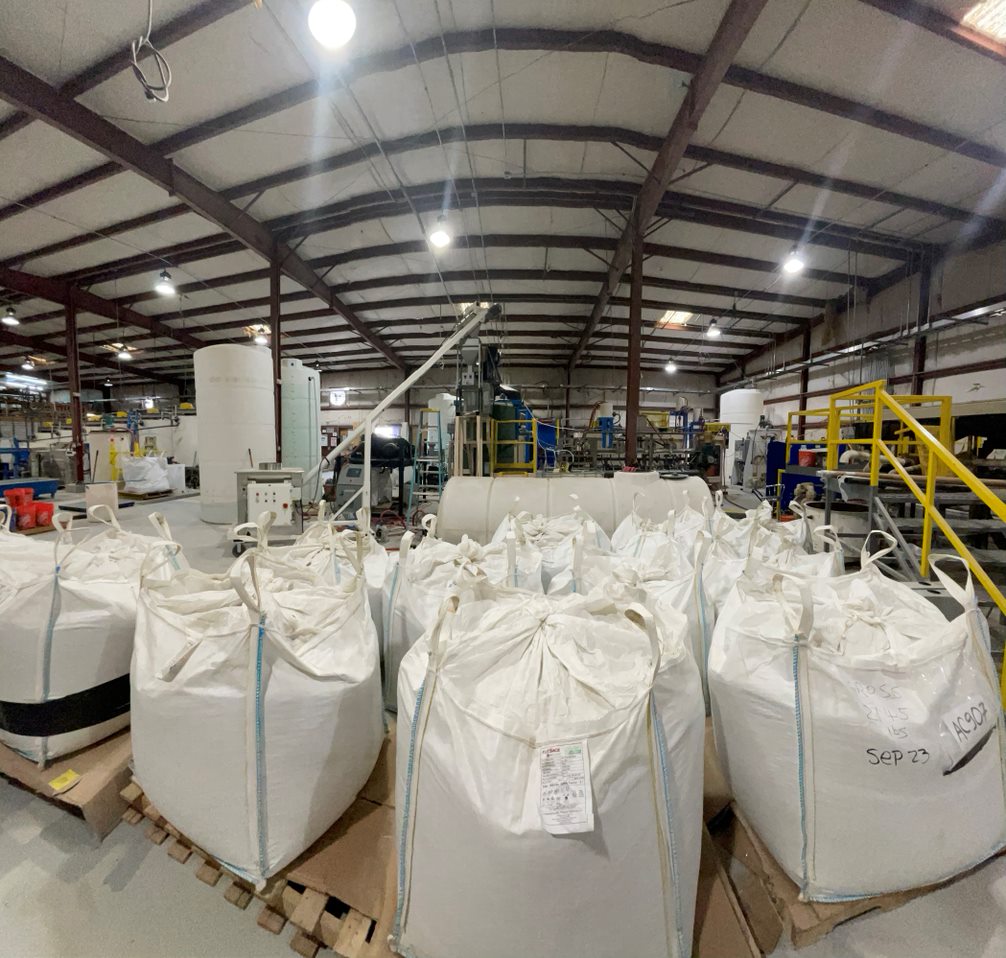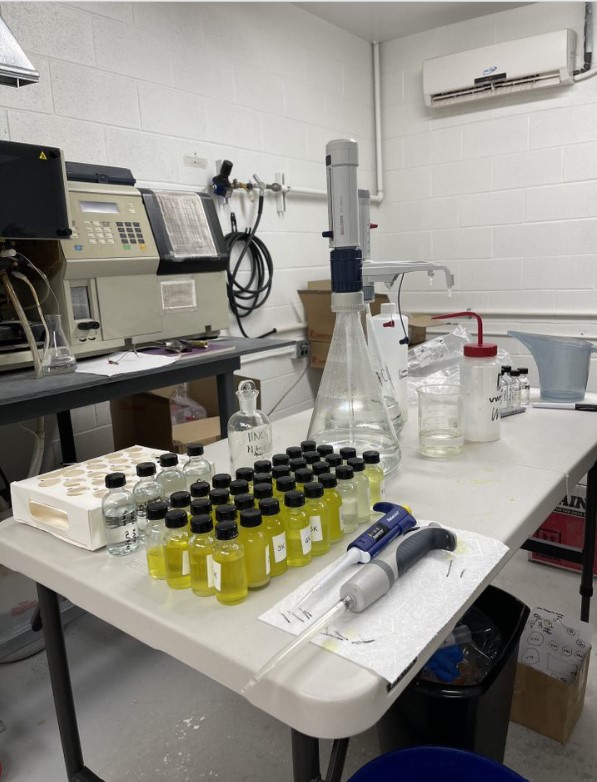JV Article: Cypress Development aims to provide a domestic source of lithium for US battery manufacturers


Lithium is a critical metal for the global push for decarbonization. It is needed to produce the rechargeable lithium-ion batteries used in electric vehicles (EVs) and energy storage technologies that promise more sustainable, low-carbon transportation systems and energy networks.
The U.S. is positioning itself as a leader in this transition to a cleaner energy future. Last November, the Biden administration signed the Bipartisan Infrastructure Law, which sets a target of 50% EV sales share in 2030 and provides US$7.5 billion to build out a nationwide network of 500,000 EV charging stations.
In addition, the previous administration designated lithium a critical mineral of strategic importance in 2017 and called for an increase in domestic lithium supplies across the supply chain by increasing exploration, processing, and streamlining of permitting for lithium projects.
However, with more than 80% of the world’s lithium presently mined in Australia, Chile, and China – with China also dominating global supply chains for lithium-ion batteries – the U.S. will need far more lithium to achieve its goals as it seeks to reduce its reliance on foreign supplies.
According to Benchmark Mineral Intelligence, lithium demand will reach 2.4 million tonnes of lithium carbonate equivalent (LCE) by 2030, almost 1.8 million tonnes more than the 600,000 tonnes of lithium Benchmark forecasts will be produced in 2022.
Although the U.S. is estimated to hold almost 8 million tonnes in lithium reserves, ranking it among the top five countries globally, it currently produces less than 2% of the global lithium supply, according to the United States Geological Survey.
Presently, the U.S. has only one producing lithium mine, Albemarle’s (NYSE: ALB) Silver Peak in Nevada, that has been producing lithium from brine for over 50 years.
Canadian developer Cypress Development (TSXV: CYP; US-OTC: CYDVF) is aiming to become “a domestic producer of lithium for the growing electric vehicle and battery storage market,” says Bill Willoughby, the company’s president and CEO.
The company is focused on advancing to production its 100%-owned Clayton Valley lithium project in southwest Nevada, which he says hosts “a substantial resource of lithium-bearing claystone immediately adjacent to the brine reservoirs at Silver Peak.”
Cypress is conducting large-scale testing at its pilot plant using material from its lithium-bearing claystone deposit while progressing towards completing a feasibility study on the project and subsequent permitting for a mine and processing facility.
The 22-sq.-km property comprises unpatented mining claims on public lands administered by the U.S. Bureau of Land Management in Esmeralda County, approximately 10 km east of the community of Silver Peak and 56 km southwest of the mining town of Tonopah, and is subject to an underlying 3% net smelter return royalty. (It is also immediately adjacent to Pure Energy Minerals’ (TSXV: PE; US-OTC: PEMIF) Clayton Valley project.)
Mineralization at Cypress’s Clayton Valley lithium project occurs in soft sedimentary rocks, predominantly comprised of illite and montmorillonite clays, which “extend for multiple kilometres along trend and reach depths of around 125 metres,” says Willoughby, a mining engineer with over 40 years of experience in the industry, who took over as CEO of the company in September 2017.

“I liked the characteristics of the deposit, and the initial drill results consistently returned over 1,000 parts per million lithium – you can go laterally and vertically and continue to see similar concentrations over relatively large distances.”
With Nevada rated the top mining jurisdiction in the U.S. and third globally by the Fraser Institute, he says the project benefits greatly from its location and has access to existing infrastructure and a skilled workforce close at hand.
The Clayton Valley project “can be accessed all-year round by paved and gravel roads that connect it to the communities of Tonopah and Silver Peak – the latter has a substation that could potentially provide power for the project,” Willoughby says. “It also has access to potential groundwater resources, and our baseline studies have shown there are not any threatened or endangered species currently on the property.”
In May, Cypress consolidated its land position in the area, acquiring a 100%-ownership of Enertopia’s (US-OTC: ENRT) Clayton Valley claystone project, immediately adjacent to Cypress’s property, which “is a continuation of the lithium-bearing claystone units with similar concentrations of lithium found on our project,” he notes.
He says the land consolidation has the “potential to enhance the size and scale of our project significantly; we are currently incorporating data from the acquisition into the resource model for our ongoing feasibility study.”

Mineral resources at the Clayton Valley project currently stand at 1.3 billion indicated tonnes grading 905 parts per million (ppm) lithium for 6.3 million tonnes of LCE.
A prefeasibility study (PFS) for the project released in May 2020 (and amended March 2021) envisioned a mining operation with an average annual production of 27,400 tonnes of LCE over 40 years of mine life. The production figures were based on a probable reserve of 213 million tonnes grading 1,129 ppm lithium for 240,900 tonnes of lithium (1.3 million tonnes LCE).
Initial capital costs were pegged at US$493 million, with operating costs averaging US$3,387 per tonne of LCE. The study estimated an after-tax net present value of US$1 billion, using an 8% discount rate and US$9,500 per tonne of LCE, and an after-tax internal rate of return of 25.8%. The initial capital outlay would be paid back in 4.4 years.
The mining plan in the PFS was based on an average mill feed rate of 15,000 tonnes per day. The material is then processed onsite by leaching with dilute sulphuric acid, followed by filtration, solution purification, concentration, and electrolysis to produce a saleable lithium product.
“Metallurgical testing on the mineralized material indicated that low-cost processing could be achieved by leaching with low-acid consumption and a high lithium recovery, with up to 80-85% projected recoveries,” Willoughby says.
He says Cypress plans to complete the ongoing feasibility study by the end of the year, with permitting for the mine and processing plant taking around two years following the successful completion of the study and construction expected to be completed 12 months after the permitting.
The preceding Joint Venture Article is PROMOTED CONTENT sponsored by CYPRESS DEVELOPMENT and produced in co-operation with The Northern Miner. Visit www.cypressdevelopmentcorp.com for more information.
Comments